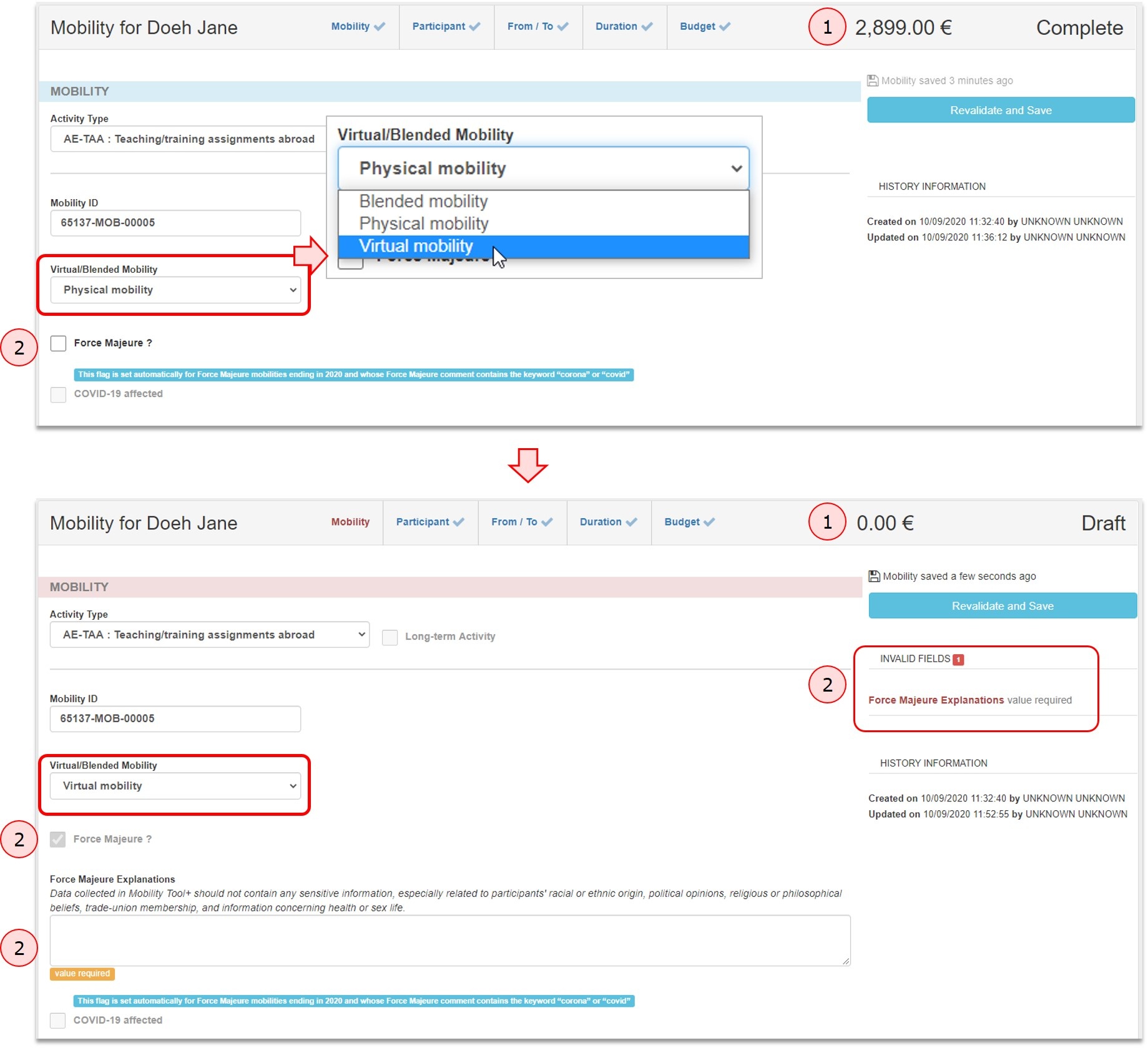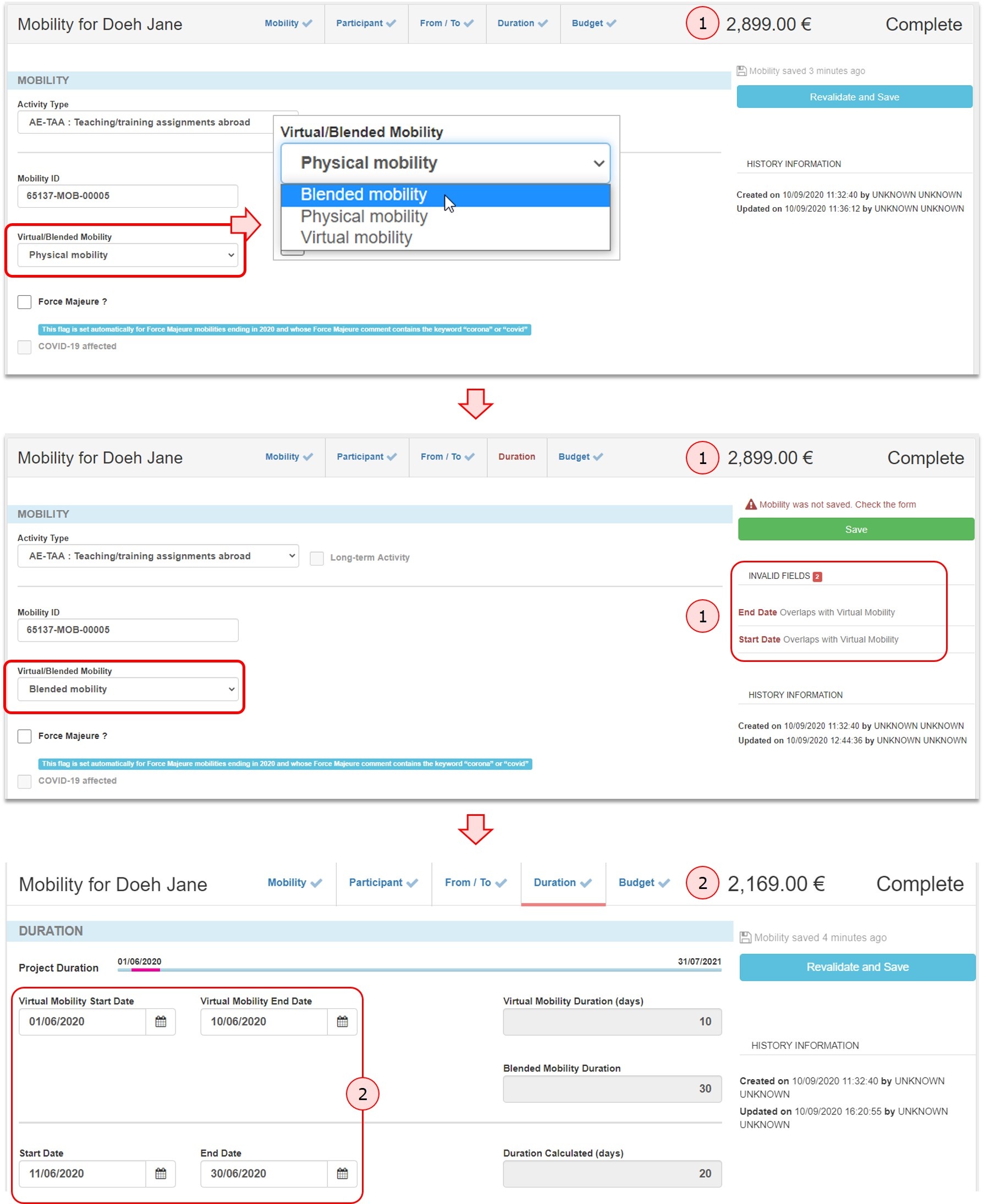COVID-19 Measures
In light of the exceptional circumstances created by the COVID-19 pandemic, the Erasmus+ programme is implementing a series of measures for the duration of the exceptional period.
These changes will impact all active projects starting from call year 2017.
Beneficiaries will be allowed to also organise their activities virtually. Where relevant, a blended activity approach is encouraged. A blended mobility has a period of virtual activity which is to be combined with a physical activity abroad, all applying specific rules and budget calculation. All other mobilities, which take place as before in a physical location, must be indicated as physical mobilities. By default all mobilities recorded in Mobility Tool+ before Release 6.3 (September 2020) are marked as physical mobilities and can be changed.
The current page explains the basics of virtual and blended mobilities in KA1 and KA3, except for KA107, which is explained separately in the page MT+ KA107 Budget transfer.
|
<div class="page-break-ruler"></div> |
Virtual MobilitiesWhat is a Virtual MobilityA virtual mobility is an activity that takes place exclusively online, without the physical presence of the participant. It is indicated in Mobility Tool+ as a Virtual Mobility and recorded similarly to a physical mobility, but without the costs that would normally apply to a physical mobility. If a virtual mobility is to be combined with a physical mobility it should be recorded as a blended mobility.
Virtual Mobility Specifics for KA1 and KA3Duration
Grants
Participant ReportsThe usual business rules are applicable to participant reports in the case of virtual mobilities. For the applicable key actions and activities, the first participant report request is submitted automatically on the end date of the virtual mobility, and reminders are submitted accordingly. ExampleThe following image shows the basic changes that occur when a mobility is updated from physical to virtual:
Blended MobilitiesWhat is a Blended MobilityA blended mobility combines both virtual and physical activities. It is indicated in Mobility Tool+ as a Blended mobility and it includes duration and budget details for both the virtual activity and the physical activity. Blended mobilities are not flagged as Force Majeure by default. Blended Mobility Specifics for KA1 and KA3Duration and Timing
Grant
Participant ReportsThe first participant report request is submitted automatically on the end date of the physical activity, and subsequent reminders are submitted according to the usual business rules applicable to participant reports for physical mobilities. ExampleThe following image shows the basic changes that occur when a mobility is updated from physical to blended:
|
<div class="page-break-ruler"></div> |

